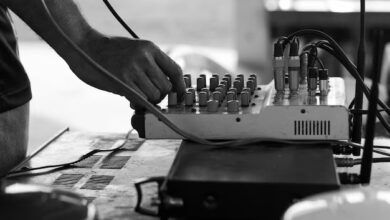Dowsstrike2045 Python: Revolutionizing Cyber Automation

In today’s rapidly evolving digital landscape, automation and cybersecurity are no longer luxuries—they are necessities. Dowsstrike2045 Python emerges as a cutting-edge framework designed to push boundaries in both fields. Combining real-time monitoring, modular architecture, and strong cybersecurity applications, it has gained traction among developers, ethical hackers, and DevOps teams alike. What makes it truly stand out is its futuristic approach, blending present needs with a forward-looking vision of automation in 2045 and beyond.
What is Dowsstrike2045 Python?
Dowsstrike2045 Python is an advanced automation and cybersecurity framework built in Python, designed for developers and security professionals who need scalable, reliable, and secure solutions. Unlike traditional libraries, it blends task automation, penetration testing, and system monitoring into one ecosystem.
Why it matters in 2025 and beyond
With cyber threats escalating and automation becoming integral to enterprise success, tools like Dowsstrike2045 Python matter more than ever. It bridges the gap between DevOps efficiency and advanced security defense, preparing organizations for the challenges of the next two decades.
Origin and Vision Behind Dowsstrike2045 Python
The role of Jeinz Macias
The framework traces back to Jeinz Macias, a visionary developer who combined his cybersecurity expertise with automation workflows. His goal was to create a tool that worked equally well for enterprises, independent developers, and security researchers.
Inspiration and the “2045” future vision
The “2045” in its name symbolizes long-term sustainability, envisioning a future where automation and security systems remain relevant, adaptive, and resilient even in the face of emerging technologies like quantum computing.
Core Features of Dowsstrike2045 Python
Modular architecture and plugin ecosystem
Users can extend functionalities with plugins, tailoring the tool to their specific environment and needs.
Real-time monitoring and event triggers
It allows monitoring of systems with instant responses to suspicious activities or anomalies.
Encryption, compression, and data security
Built-in encryption ensures secure data handling, while compression optimizes performance for large datasets.
Asynchronous programming for speed and scalability
By leveraging async frameworks, Dowsstrike2045 Python achieves lightning-fast execution, even in high-load environments.
Architecture and Design Philosophy
Core Layer: task execution, logging, scheduling
Handles the backbone of automation, including scheduling tasks and logging activities with precision.
Integration Layer: APIs, databases, DevOps platforms
Connects seamlessly with databases, cloud services, and CI/CD pipelines.
Interface Layer: CLI, dashboards, REST API
Offers flexibility with a simple command-line interface, interactive dashboards, and API-based interactions.
Cybersecurity Applications of Dowsstrike2045 Python
Intrusion detection and vulnerability scanning
Automates the detection of threats while scanning systems for weak points.
Penetration testing modules
Includes customizable modules for controlled and ethical exploitation testing.
Integration with Metasploit, Nmap, and Wireshark
Its compatibility with popular cybersecurity tools makes it a versatile companion for ethical hackers.
Real-world use cases for ethical hackers
From testing corporate networks to securing personal servers, it provides a wide range of applications.
DevOps and Automation Use Cases
Continuous integration and deployment (CI/CD)
Streamlines software delivery pipelines with error detection and automated rollbacks.
Log monitoring and error detection
Tracks application logs in real time, sending alerts when anomalies occur.
System resource tracking and process automation
Optimizes server usage, automates backups, and ensures smoother workflows.
Integrations with Docker, Kubernetes, Jenkins, and GitLab
Fits naturally into modern DevOps ecosystems, reducing overhead and boosting productivity.
Comparison with Other Dowsstrike2045 Python Tools
Scapy vs dowsstrike2045
While Scapy excels in packet crafting, Dowsstrike2045 Python extends beyond into automation and real-time monitoring.
Wireshark vs dowsstrike2045
Wireshark is great for packet analysis, but it lacks automation; Dowsstrike2045 combines both worlds.
Metasploit vs dowsstrike2045
Metasploit is a powerhouse for exploits, but Dowsstrike2045 Python integrates automation to make repetitive tasks easier.
Unique advantages over generic libraries
Its modularity, scalability, and forward-looking vision make it stand apart from generic Python tools.
Installation and Setup Guide
System requirements (Python 3.8+, Linux, Windows, macOS)
Compatible with multiple platforms, with Linux offering the most advanced features.
Installation via pip and GitHub
pip install dowsstrike2045 makes it simple, with advanced users pulling directly from GitHub for custom builds.
Configuring environments and dependencies
Virtual environments ensure isolated setups for security and reliability.
First script: monitoring logs for “ERROR”
A beginner-friendly example demonstrates monitoring application logs to trigger alerts on errors.
Advanced Features and Performance Benefits
Zero-copy data transfer system
Boosts speed by eliminating unnecessary data duplication.
Memory-efficient execution up to 1TB cache
Handles big-data workloads with minimal memory strain.
Parallel sessions for large-scale environments
Ideal for enterprise-scale environments managing hundreds of simultaneous processes.
Machine learning and data-heavy applications
Supports AI-driven workflows with optimized performance.
Limitations and Considerations
Like all powerful tools, Dowsstrike2045 Python comes with a learning curve. Beginners may struggle with its complex documentation and Linux dependencies for packet manipulation. However, once mastered, it unlocks a vast range of possibilities.
Ethical and Responsible Use
With great power comes responsibility. Users must respect legal frameworks, focus on ethical hacking, and test in controlled environments like Hack The Box or TryHackMe to avoid unintended consequences.
Community and Ecosystem Growth
An open-source model has attracted a growing base of contributors. Clear guidelines ensure responsible development while a thriving community shares tutorials, plugins, and insights.
The Future of Dowsstrike2045 Python
The roadmap includes AI-driven diagnostics, cloud-native deployment, blockchain-based validations, and readiness for quantum computing. The future looks promising, positioning it as a long-term leader in cyber automation.
Practical Examples and Tutorials
Building a real-time alert system
Users can automate alerts for suspicious log entries to improve system response.
Automating system recovery tasks
Scripts can restart services or restore backups automatically after a crash.
Creating custom exploit modules (in lab settings)
Security professionals can design lab-based exploit modules for controlled testing.
Conclusion
Dowsstrike2045 Python is more than just a tool—it is a vision for the future of cyber automation. Its modular design, scalability, and security-first approach make it a reliable companion for developers, ethical hackers, and enterprises. As threats grow and systems evolve, this framework offers a roadmap for long-term adaptability and innovation.
Frequently Asked Questions
Is it beginner-friendly?
While powerful, it may feel overwhelming at first. Beginners can start with basic automation scripts before exploring its advanced security features.
Which platforms support it?
It runs smoothly on Linux, Windows, and macOS, though Linux provides the best performance for security functions.
Is it free and open-source?
Yes, Dowsstrike2045 Python follows an open-source development model, encouraging contributions from the global community.
How does it differ from other tools?
Unlike standalone libraries, it combines automation, monitoring, and cybersecurity in one ecosystem, designed with future-proof scalability.
Stay in touch to get more updates & alerts on NYCNEWS! Thank you




